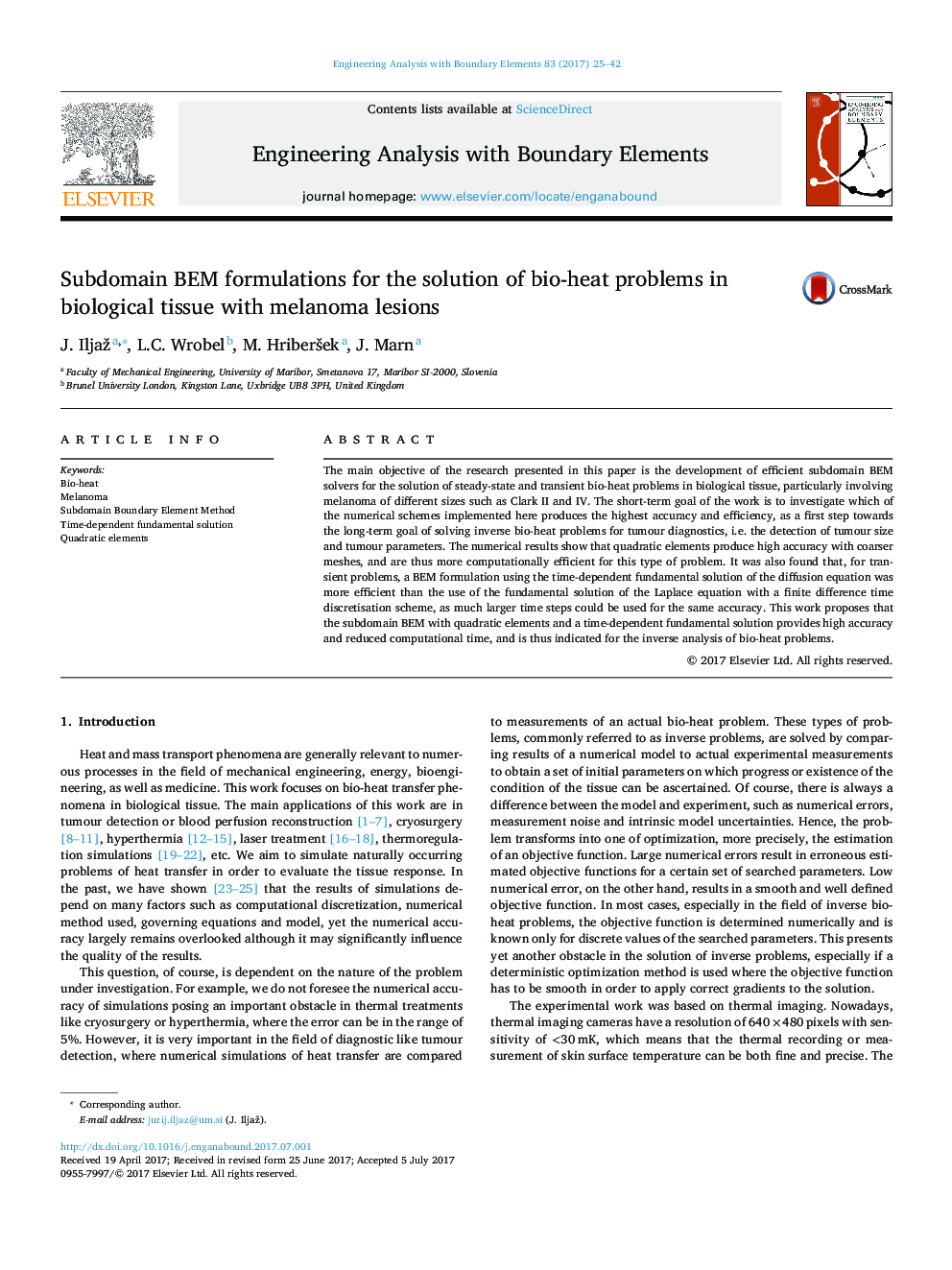| Article ID | Journal | Published Year | Pages | File Type |
|---|---|---|---|---|
| 4965964 | Engineering Analysis with Boundary Elements | 2017 | 18 Pages |
Abstract
The main objective of the research presented in this paper is the development of efficient subdomain BEM solvers for the solution of steady-state and transient bio-heat problems in biological tissue, particularly involving melanoma of different sizes such as Clark II and IV. The short-term goal of the work is to investigate which of the numerical schemes implemented here produces the highest accuracy and efficiency, as a first step towards the long-term goal of solving inverse bio-heat problems for tumour diagnostics, i.e. the detection of tumour size and tumour parameters. The numerical results show that quadratic elements produce high accuracy with coarser meshes, and are thus more computationally efficient for this type of problem. It was also found that, for transient problems, a BEM formulation using the time-dependent fundamental solution of the diffusion equation was more efficient than the use of the fundamental solution of the Laplace equation with a finite difference time discretisation scheme, as much larger time steps could be used for the same accuracy. This work proposes that the subdomain BEM with quadratic elements and a time-dependent fundamental solution provides high accuracy and reduced computational time, and is thus indicated for the inverse analysis of bio-heat problems.
Related Topics
Physical Sciences and Engineering
Computer Science
Computer Science Applications
Authors
J. Iljaž, L.C. Wrobel, M. Hriberšek, J. Marn,
